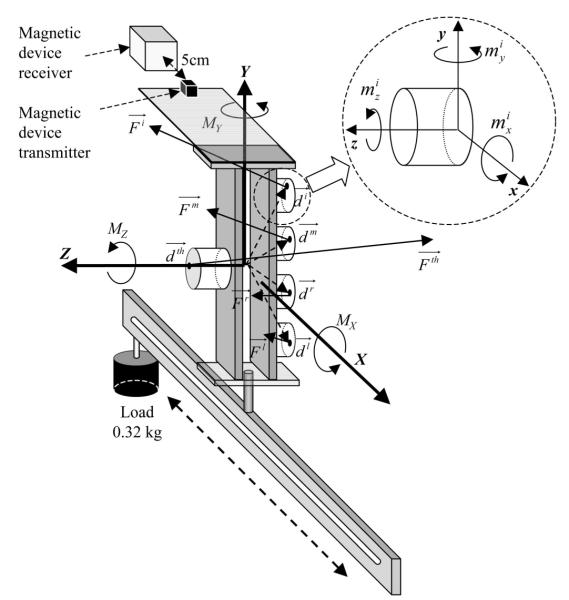FIG. 1.
Experimental setup. Thumb and finger sensors (shown as white cylinders) were attached to vertical aluminum bars, and a movable load (shown as a black cylinder) was attached to the long horizontal aluminum beam. A transmitter (the small black cube) of a magnetic tracking device was attached to a Plexiglas base affixed to the top of the handle. , , , , and are the force vectors of the thumb, index, middle, ring, and little fingers and , , , , and are the force application point vectors of the thumb, index, middle, ring, and little fingers, respectively. MX, MY, and MZ are the global moments with respect to the global X-, Y-, and Z-axes; mx, my, and mz are the local moments with respect to the local x-, y-, and z-axes on each sensor, respectively; th, i, m, r, and l stand for the thumb, index, middle, ring, and little fingers.

